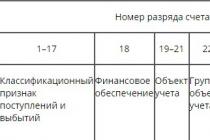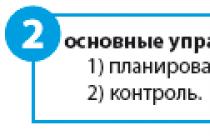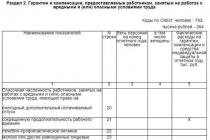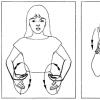Question: An organization purchased a car to carry out its activities. For this type of vehicle, fuel consumption standards are not approved by law. The technical documentation for this vehicle contains information about the amount of fuel consumed by the vehicle.
The organization turned to a third-party scientific organization that develops fuel consumption standards based on established methods to develop the latter appropriate standards for the purchased vehicle, but the development of fuel consumption standards will take a long time. Can the head of an organization, on the basis of the information specified in the technical documentation of the vehicle, establish fuel consumption standards for a purchased vehicle before a scientific organization determines fuel consumption standards, and the costs of purchasing fuel when determining the tax base for corporate income tax in accordance with these standards?
Answer: An organization may temporarily establish, by local regulations, fuel consumption standards for a purchased vehicle based on the technical documentation of the vehicle, if this organization has turned to a scientific organization to calculate fuel consumption standards for a given vehicle, and these standards have not yet been adopted by the organization’s local regulations. Fuel consumption standards established for the purchased vehicle on the basis of its technical documentation can be taken into account when calculating the tax base for corporate income tax. However, based on judicial practice, applying for the development of standards is not necessary; an organization can write off fuel and lubricants based on an order from the manager establishing fuel consumption standards.
Rationale: In view of the provisions of Article 247 of the Tax Code of the Russian Federation, the object of taxation for corporate income tax (hereinafter in this chapter - tax) is recognized as profit received by the taxpayer.
The norms of paragraph 1 of paragraph 1 of Article 252 of the Tax Code of the Russian Federation establish that for the purposes of Chapter 25, the taxpayer reduces the income received by the amount of expenses incurred (except for the expenses specified in Article 270 of the Tax Code of the Russian Federation).
Consequently, when calculating the amount of corporate income tax, this amount can be reduced by the amount of expenses incurred by the organization.
By virtue of the norms of paragraph 2 of Article 252 of the Tax Code of the Russian Federation, expenses are recognized as justified and documented expenses (and in cases provided for in Article 265 of the Tax Code of the Russian Federation, losses) incurred (incurred) by the taxpayer.
The above rule indicates that the fact of expenses that an organization has, as well as their size, must be confirmed by documents, and the expenses themselves must be justified.
As established by the norms of subparagraph 5 of paragraph 1 of Article 254 of the Tax Code of the Russian Federation, material expenses, in particular, include the following expenses of the taxpayer for the purchase of fuel, water, energy of all types spent for technological purposes, production (including by the taxpayer himself for production needs) of all types of energy, heating of buildings, as well as costs of production and (or) acquisition of power, costs of transformation and transmission of energy.
Consequently, fuel costs must be taken into account when calculating the tax base for corporate income tax.
It should be noted that the norms for the consumption of fuels and lubricants in road transport are established by the Methodological Recommendations "Rates for the consumption of fuels and lubricants in road transport", put into effect by Order of the Ministry of Transport of the Russian Federation dated March 14, 2008 N AM-23-r "On bringing into force Methodological recommendations "Consumption standards for fuels and lubricants in road transport" (hereinafter referred to as the Recommendations).
Paragraph 6 of the Recommendations establishes that for the period of validity of this document, for models, brands and modifications of automotive vehicles entering the vehicle fleet of a country for which the Ministry of Transport of Russia has not approved fuel consumption standards (not included in this document), heads of local administrations of regions and enterprises may introduce action by its own order of norms developed on individual applications in the prescribed manner by scientific organizations that develop such norms according to a special program-method.
Thus, if fuel consumption standards are not established by law, then they can be established by the heads of organizations.
The Ministry of Finance of Russia adheres to the position from which it follows that if the Ministry of Transport of Russia has not approved fuel consumption standards for the relevant automotive equipment, then the head of the organization can put into effect by his order the standards developed on individual requests in the prescribed manner by scientific organizations developing such standards according to a special program-method, before the adoption of an order from an organization approving the standards developed in the prescribed manner, the taxpayer can be guided by the relevant technical documentation and (or) information provided by the car manufacturer. This position is reflected in the Letter of the Ministry of Finance of Russia dated June 11, 2011 N 03-03-06/4/67.
In addition, in the above Letter, the Ministry of Finance of Russia noted that if an organization has applied to the appropriate scientific organization to develop fuel consumption standards for a purchased car, for which such standards are not established by law, then the fuel consumption standards established by order of the manager on the basis of the technical documentation of the car are subject to accounting when calculating the profit tax base.
Based on judicial practice, it follows that organizations can write off fuel according to the standards established by order of the head of the enterprise. Thus, the Ninth Arbitration Court of Appeal, having considered the case of additional assessment by the tax authority of amounts of taxes, including the amount of corporate income tax in relation to the organization, accepted for tax purposes the fuel consumption standards established by the order of the head, on the basis of the Recommendations, in its Resolution dated 08.10. 2009 N A40-83081/08-80-312 determined that additional assessment of the amount of income tax due to the use for tax purposes of fuel consumption standards established by order of the head of the organization is unlawful. When making this decision, the court was guided by norms that are currently no longer in force, but this position is currently applicable by analogy.
Based on the position of the Ministry of Finance of Russia, we can conclude that in order to establish fuel consumption standards, the organization must contact a scientific organization to calculate these standards in the prescribed manner, until the moment when the developed standards are adopted by the organization by order, the organization has the right, by order of the manager, to establish consumption standards fuel, based on the information specified in the technical documentation of the vehicle. In addition, the norms established by the order of the head are subject to consideration when calculating the tax base for the profits of organizations. However, the establishment and accounting of standards on the basis of the technical documentation of the car is possible only until a scientific organization calculates fuel consumption rates according to the established methodology; in addition, the legislation obviously indicates the obligation of the organization to contact a scientific organization in order to calculate the latest consumption rates fuel for the purchased car. However, based on judicial practice, applying for the development of standards is not necessary; an organization can write off fuel and lubricants based on an order from the manager establishing fuel consumption standards.
Are you an accountant, but the director doesn't appreciate you? Does he think that you are just wasting his money and overpaying taxes?
Become a valuable specialist in the eyes of management. Learn to work with accounts receivable.
The Clerk Learning Center has a new one.
Training is completely remote, we issue a certificate.
In any economic process, losses of material assets are inevitable - the so-called technological losses. The reasons for such losses may be low-quality raw materials, breakdown of production equipment or incorrectly calculated standards, etc. In tax accounting, technological losses within the established standard are taken into account as part of material costs.
In this section we will consider: the concept of technological losses, the economic justification and documentary evidence of technological losses, the procedure for their reflection in the accounting and tax records of the organization.
Technological losses losses during the production and (or) transportation of goods (work, services) are recognized, due to the technological features of the production cycle and (or) the transportation process, as well as the physical and chemical characteristics of the raw materials used.
In accordance with paragraphs. 3 paragraph 7 art. 254 of the Tax Code of the Russian Federation (hereinafter referred to as the Tax Code of the Russian Federation), technological losses in the production or transportation of goods (work, services) for the purposes of taxing the profits of organizations are equated to material costs.
Thus, losses of raw materials and supplies incurred by an organization during the production or transportation of finished products can be written off as a reduction in the tax base for corporate income tax as technological losses.
According to paragraph 1 of Art. 252 of the Tax Code of the Russian Federation, for the purposes of taxing the profits of organizations, when classifying technological losses during production or transportation as material expenses, the fact of their economic justification and documentary confirmation is important.
To comply with the above requirements, it is necessary to develop, approve and economically justify technological production standards. To account for technological costs, this requirement is set out in Letter of the Ministry of Finance of Russia dated November 1, 2005 N 03-03-04/1/328.
Typically, the standard for irrecoverable waste for a specific type of raw materials used in production is determined based on the technological features of the production cycle or transportation process.
Technological loss standards are documented in internal documents that do not have a unified form. In particular, they may be technological maps, process estimates or other similar documents.
In the event that the enterprise does not draw up a technological map or other similar document, confirmation of expenses in the form of technological losses during production or transportation are industry regulations, calculations and studies of the organization’s technological services, or other limits regulating the course of the technological process.
Thus, expenses in the form of technological losses are taken into account for profit tax purposes as part of material expenses if there is documentary evidence of the fact of such losses within reasonable standards. A similar conclusion is shared by the tax authorities in Letter No. 20-12/015184 of the Federal Tax Service of Russia for Moscow dated February 18, 2008, as well as by the Ministry of Finance of Russia in its Letter dated March 27, 2006 No. 03-03-04/1/289.
In accounting, the cost of raw materials written off for production is recognized as material costs as an expense for ordinary activities and is reflected in the debit of account 20 "Main production" in correspondence with the credit of account 10 "Materials", subaccount 1 "Raw materials and supplies", based on clauses 5, 7, 8 of the Accounting Regulations “Expenses of the Organization” PBU 10/99, approved by Order of the Ministry of Finance of Russia dated May 6, 1999 N 33n, Instructions for the application of the Chart of Accounts for accounting of financial and economic activities of organizations, approved by the Order Ministry of Finance of Russia dated October 31, 2000 N 94n.
The generated actual cost of production is written off from account 20 “Main production” to the debit of account 43 “Finished products”.
Example. The organization Printa LLC carries out printing activities. This month, 10 tons of raw materials were transferred to production at a price of 10 rubles. per kilogram in the amount of 100,000 rubles. Printed products were sold in the same month.
The standard for technological losses associated with the production process of printed products according to the technological map is 4% of the volume released for production. The actual value of technological losses was 350 kg.
In its accounting policy for tax accounting purposes, the organization established that technological losses are direct material costs.
Since the actual value of technological losses (350 kg) does not exceed the standard established in the technological map - 400 kg (10,000 kg x 4%), such losses can be taken into account as part of material expenses for profit tax purposes in full, that is, in in the amount of 3500 rubles. (10 RUR x 350 kg).
As already noted, when calculating income tax, technological losses are included in the material costs of taxpayers whose activities are related to the processing of raw materials. Such losses are classified as direct material costs.
Debit account 43 “Finished products” Credit account 20 “Main production” - 100,000 rubles. - the actual cost of finished products, including technological losses, is written off;
Debit account 90 "Sales", subaccount 2 "Cost of sales", Credit account 43 "Finished products" - 100,000 rubles. - the cost of printed products is written off.
Often in practice, technological losses exceed the standard established by the technological map. In this case, one technological map is not enough to confirm the actual consumption of raw materials. A document must also be drawn up explaining the reasons for deviations from established standards. For example, a decision of the competent commission, recorded in documents.
An act on excess technological losses is also drawn up, which indicates the reasons for deviations from the established standards. An investigation into these causes is carried out, and the factors that led to an increase in technological losses are identified in relation to each specific situation.
An approximate list of reasons for deviations from material consumption standards is given in Appendix 4 to the Methodological Instructions for Accounting for Inventories, approved by Order of the Ministry of Finance of Russia dated December 28, 2001 N 119n. Such reasons include, in particular:
Non-compliance of materials, purchased semi-finished products and components with technical specifications;
Losses caused by modifications at the request of the customer or developer;
Replacement of materials, semi-finished products and components provided by the technology with other materials, semi-finished products and components;
Violation of the technological process;
Use of high-grade materials instead of waste;
Cutting the material;
Other reasons.
The Ministry of Finance of Russia in its Letter dated May 17, 2006 N 03-03-04/1/462 indicated that excess losses as unreasonable cannot reduce the taxable profit of the taxpayer.
Thus, according to the Russian Ministry of Finance, technological losses in excess of established standards cannot be taken into account as part of material expenses for tax purposes of the organization’s profit.
Example. Let's change the condition of the previous example. Let us assume that the actual value of technological losses was 5% of the volume of raw materials supplied for production.
Let us remind you that the value of technological losses according to the norm is: 400 kg (10,000 kg x 4%).
The actual value of technological losses will be equal to: 500 kg (10,000 kg x 5%).
The amount of excess expenses will be: 1000 rubles. ((500 kg - 400 kg) x 10 rub.).
Since the actual value of technological losses (500 kg) exceeds the standard established in the technological map (400 kg), such losses are taken into account as part of material costs for profit tax purposes only within the norms. The amount exceeding the limit is not taken into account when calculating income tax.
Consequently, in the tax accounting of the Printa LLC organization, technological losses in the amount of 99,000 rubles can be taken into account as part of material expenses for profit tax purposes. (100,000 rub. - 1000 rub.).
In addition, it is necessary to take into account that according to the Accounting Regulations “Accounting for Income Tax Calculations” PBU 18/02, approved by Order of the Ministry of Finance of Russia dated November 19, 2002 N 114n, the excess amount of technological losses will be a constant difference, which, in in turn, will lead to the formation of a permanent tax liability.
The permanent tax liability in our example will be equal to: 200 rubles. (RUB 1000 x 20%).
The following entries will be made in the accounting records of the Printa LLC organization:
Debit of account 20 "Main production" Credit of account 10 "Materials", subaccount 1 "Raw materials and supplies", - 100,000 rubles. (10,000 kg x 10 rub.) - raw materials transferred to production;
Debit account 43 “Finished products” Credit account 20 “Main production” - 99,000 rubles. - the actual cost of finished products is written off, including technological losses within the norms;
Debit account 90 "Sales", subaccount 2 "Cost of sales", Credit account 43 "Finished products" - 99,000 rubles. - the cost of printed products is written off;
Debit account 91 "Other income and expenses", subaccount 2 "Other expenses", Credit account 20 "Main production" - 1000 rubles. - expenses exceeding the norm of technological losses are reflected;
Debit account 99 “Financial result”, subaccount “Permanent tax liability”, Credit account 68 “Calculations for taxes and fees”, subaccount “Calculations for income tax” - 200 rubles. (RUB 1,000 x 20%) - reflects a permanent tax liability.
However, judicial practice regarding the inclusion of excess technological losses as part of material costs for profit tax purposes takes a different point of view. For example:
Resolution of the Federal Antimonopoly Service of the Moscow District dated December 26, 2007 N KA-A40/13358-07, according to which technological losses in production are equated for profit tax purposes to material expenses and their write-off as expenses is not associated with Ch. 25 of the Tax Code of the Russian Federation with any standards. Such expenses are subject to general requirements established in paragraph 1 of Art. 252 of the Tax Code of the Russian Federation, that is, they must be economically justified and documented;
Resolution of the Federal Antimonopoly Service of the West Siberian District of October 8, 2007 N F04-6922/2007 (38872-A03-15). Taking into account paragraphs. 3 paragraph 7 art. 254 of the Tax Code of the Russian Federation, as well as the fact that all the disputed amounts were incurred by the taxpayer to carry out his main activities in order to generate income, the appellate instance came to the conclusion that these expenses are related to production and sales and meet the requirements of paragraph 1 of Art. 252 Tax Code of the Russian Federation;
Resolution of the Federal Antimonopoly Service of the North Caucasus District dated September 27, 2006 N F08-4818/2006-2043A, in which the court found that the enterprise’s excess water consumption is economically justified, since it is associated with excess water loss during water supply.
Based on the above, we can draw the following conclusion: in the opinion of arbitration courts, excess technological losses can be taken into account as part of material expenses for tax purposes of the organization’s profit, provided that they meet the requirements of paragraph 1 of Art. 252 of the Tax Code of the Russian Federation, that is, they must be economically justified and documented. However, it should be borne in mind that the economic justification for excess technological losses will need to be proven to the taxpayer in court.
Consumption standards for raw materials and supplies play a key role in organizing the activities of an industrial enterprise and are used for planning, operational control, analysis and management decision-making.
An important element of the cost management and control system is standard costs.
Standards (norms)- a quantitative value that is determined in advance and serves to measure the results of activities. Standards are set both in monetary terms (standard costs) and in physical terms (for example, material consumption in kilograms, working time of production personnel in hours).
The analogue of the first concept (standard costs) in domestic practice is standards, the second is standards.
Standard costs can be set for each type of cost. They are determined during the planning process and included in the resulting profit plan.
There is an opinion that the standard method of cost accounting is acceptable only in mass and large-scale production and is of little use in small-scale and single-unit production.
Of course, in mass and large-scale production, when a limited range of goods is produced in significant volumes and standardized technologies are used, it is easier to ration the resources consumed. But even in conditions of single production (production of piece equipment, construction of a unique facility), it is possible to determine standardized components or standardized technological operations.
The normative method is applicable in all industries where the costs of manufacturing products can be compared with the results of labor at certain intervals.
Thanks to these features the normative method is an indispensable tool:
- planning.
Based on the standards, the need for production resources (equipment, materials, personnel) and financial resources for the acquisition of these resources is planned.
Based on cost standards, planned calculations are formed, which, in turn, allows you to plan the production program, selling prices, sales volume, revenue and, ultimately, profit (for an example of planning the need for material resources, see below);
- operational control and management decision making.
During the production process, for various reasons, deviations from the normal flow of the technological process may appear, and with them deviations in the consumption of production resources. This usually requires additional manufacturing costs. By promptly eliminating the causes of violations of production consumption standards, it is possible to restore the normal course of the technological process;
- analysis.
By distributing deviations according to the reasons that caused them, the culprits, and accounting objects, it is possible, even before the end of the reporting period, to predict the results of the enterprise as a whole and individual cost centers in particular, and to develop a cost reduction program.
We prepare standard calculations
On the one hand, the formation of a production cost budget (which includes standard calculations) is a necessary intermediate stage of financial planning: without standard calculations it is impossible to create a profit and loss budget. On the other hand, when forming a production cost budget, it is also necessary to draw up a number of intermediate budgets, for example, a budget for the need for material resources.
One way or another, data on the standard cost of manufactured products is used in planning:
- range of products;
- sales programs;
- needs for production resources;
- needs for financial resources;
- cash flow budget;
- financial results of activities.
For your information
The listed planned indicators in the current period become a control tool: when implementing budgets, planned and actual indicators are constantly compared.
To draw up standard calculations you need:
- regulatory maps with data on the norms (current or planned) of consumption of production resources for the manufacture of a unit of product;
- databases on prices for consumed production resources;
- clearly defined algorithms (methods) for calculating costs and preparing estimates.
To use the normative method, the following prerequisites are required:
1. Availability of standards for consumption of production factors in the following sections:
- raw materials, basic materials, semi-finished products - per part, product, for each place of their consumption;
- norms for the consumption of working time (both in relation to equipment and in relation to human labor) - for individual technological transitions, operations, parts of the product and the product as a whole.
2. Prompt identification and registration of expenses deviating from the norms.
3. Systematic accounting of changes in standards.
Basic requirement for standards- they must reflect the actual production needs for consumed resources at a given technological and organizational level.
Current norms may coincide with planned ones if no change in the norms of consumption of production resources is expected during the period under review.
In order for an enterprise to use the standard accounting method, it is necessary first of all to develop a system of methodological support and create the necessary organizational infrastructure responsible for the development and revision of standards, for making changes to them.
We are developing standards
Standards are developed in the following cases:
- launching a new product into production;
- lack of standards for existing products.
There are two main approaches used:
1. Development of so-called technically sound standards.
Standards for the consumption of production resources are developed by design, production, technical and other departments of the enterprise on the basis of industry reference publications by calculation, expert or experimental means.
2. Development of standards “based on what has been achieved.”
In this case, there is no development as such - the actual consumption values of production resources at the enterprise are accepted as norms.
This approach is quite rightly criticized for the “technical groundlessness” of the norms. But, firstly, the presence of even not completely “technically sound” norms is better than their absence; secondly, the “technically justified” standards themselves can be called so rather arbitrarily: the industry reference publications used for their development are often outdated and do not reflect the current level of technology development. In addition, the directories are of a single, universal nature and do not take into account the production characteristics of a particular enterprise.
Using calculation and expert methods, it is also difficult to unambiguously determine standards. To obtain reliable indicators experimentally, a sufficient amount of observational data is necessary.
For your information
The development of standards “from what has been achieved” is permissible, provided that these standards are periodically reviewed.
The standards being developed are included in the regulatory maps, which are compiled for each product. The normative (routing and technological) map indicates the norms for the consumption of production resources at each technological operation of the production process.
We are revising
Revision of standards allows you to check:
- how correctly the standards were initially established;
- to what extent the established standards correspond to the current technological and organizational level of production at the enterprise, for example, when using different/new equipment.
Basic methods for revising standards:
- checks. The correctness of the calculations carried out during the development of standards is assessed, mechanical errors are eliminated, expert assessments are revised, etc. It is used in cases of significant and fairly stable deviations of actual indicators from the developed standards;
- statistical observations and analysis of deviations of actual data from accepted norms.
We change
There are planned and unplanned changes in norms.
Reasons for the planned change in standards:
- carrying out organizational and technical measures (replacement of equipment, switching to another type of raw material, advanced training of personnel, etc.);
- inconsistency of standards with the current organizational and technological level of production, identified during the audit.
As a rule, in the process of planned changes, new standards are established for a relatively long period of time.
Unscheduled change in standards may be caused, for example, by the lack of a required type of material and the need to replace it with another, the need to temporarily switch to another type of equipment (when the equipment provided for in the technological map is inoperable or does not have free production capacity), or the use of workers of a different profession or qualification.
An unscheduled change in standards is carried out for a certain period of time - until the reasons for the changes are eliminated, the materials, equipment, and personnel required by the technology are prepared and provided.
We formalize a change in consumption rate
Any change in material consumption rates leads to a change in the cost of manufactured products. Therefore, each change must be agreed upon with the services responsible for calculating costs and documented Act on changing the consumption rate of raw materials and materials.
The act must indicate for which products the standards are changing.
In our case, the changes concern three products: A1, A2 and A3.
For product A1, the main material - metal 1.2 mm thick - is replaced with metal 1.5 mm thick, and the rate of material consumption per unit of product increases from 1.25 kg to 1.5625 kg. Adjustment of consumption rates is associated with an improvement in consumer properties caused by changes in the design of the product.
Also, for product A1, the packaging is replaced: corrugated sheet 1000x2000 is replaced with corrugated box No. 1, and the consumption rate also changes.
For products A2 and A3, the packaging is replaced: corrugated sheet 1000×2000 is replaced with corrugated box No. 2, the consumption rate in pieces does not change.
100 units of product A2 must be painted in a different color at the buyer’s request.
The act is signed by the employee who drew it up; consent signatures are placed by those responsible for checking the data specified in the act (in the case considered - the designer and technologist).
After approval, the document is approved by the head of the enterprise.
We collect and systematize data to plan the need for material and financial resources
The most convenient form of organizing data for recording material consumption rates in production is chess, ormatrix(Table 1).
The rows of the table indicate the names of raw materials and supplies, the columns indicate the name of the product. , at the intersection of rows and columns - the consumption rate.
Add a column with the price of materials and a line with the production program (production plan) to the form - and you can easily calculate the planned need for raw materials both in physical units and by cost.

Column 13 indicates the need for a material resource in natural units, calculated using the formula:
V i= K 1 N i 1 + K 2 N i 2 + ... + K m N im, (1)
Where V i- volume i-th material resource in natural units;
K - quantity of product planned for production, pcs.;
N i- consumption rate i th material resource for production j-th product;
m— number of products.
The cost of the necessary material resources (column 14) is determined as follows:
WITH i= C i × V i. (2)
where C i- price i th material resource;
C i— price i th material resource;
V i- volume i th material resource in natural units.
We create a database of resource prices
The price of the material resource requires special attention. The main task is to set as a standard price the price that is expected to prevail during the coming period:
- if, at the time of compiling the standard costing, the corresponding production resources have either already been purchased (i.e., the actual price is known), or have not yet been purchased, but purchase agreements have been signed (i.e., the price is also known), actual prices can be used;
- If components or material are purchased for the first time, a price is often planned, which is expected to be agreed upon during negotiations. In such cases, the forecast price can be used as a standard. If the price ultimately reached during negotiations differs significantly from the estimated price, the standard price is adjusted accordingly;
- if an enterprise purchases materials from several suppliers at different prices, a weighted average price will be a satisfactory price standard;
Example
Materials are supplied to the enterprise from several suppliers at different prices.
To establish the price standard, we will use the data in table. 2.
table 2
Initial data for calculations
Weighted average price = 0.3 × 26 + 0.4 × 23 + 0.3 × 20 = 23 rubles.
______________________
- If the goal is to minimize the cost of a resource, the minimum price should be used as a standard.
In our example C min= 20 rub. Costs for materials purchased at higher prices will be recorded as variances.
You should also consider the possibility of getting a discount when purchasing certain materials in large quantities. But you cannot focus only on low prices when purchasing materials in bulk in large quantities.
Important!
The standard price should be based on the volume of purchases that minimizes the total unit costs, including the cost of storing inventory, purchasing costs and ordering costs.
We approve the methodology for calculating standard calculations
The enterprise must be approved methodology for compiling standard calculations, in which it is necessary to reflect:
1. Algorithm for calculating standard calculations, including:
- list of items in the calculation, their content and calculation procedure, necessary data;
- the composition of overhead costs and the method of their distribution among units of production.
2. Organizational issues (with deadlines):
- frequency of recalculation of standard calculations (for example, once a quarter);
- responsible department for drawing up standard calculations;
- departments providing information for the preparation of calculations;
- the procedure for transferring standard calculations to other departments.
conclusions
1. For planning the need for material resources, the most convenient matrix form of organizing data according to the consumption rates of material resources.
2. One of the necessary elements for the correct operation of an enterprise is the regulation of material consumption and taking into account changes in standards.
3. When calculating the need for financial resources for a production program, special attention should be paid to the standard price of the purchased resource.
4. The enterprise must develop an algorithm (methodology) for calculating standard calculations.
.“Standards for fuel and lubricant consumption in road transport (No. Р3112194-0366-03)” were approved by the Ministry of Transport of the Russian Federation on April 29, 2003. These standards came into force on July 1, 2003 and will be in effect until January 1, 2008.
These standards contain the values of basic indicators:
ü fuel consumption standards for general purpose automotive rolling stock;
ü fuel consumption standards for the operation of special vehicles;
ü the procedure for applying standards and methods for calculating normalized fuel consumption during operation;
ü reference standards for lubricant consumption;
ü values of winter allowances;
ü other data.
This document is intended for motor transport enterprises and organizations (regardless of their form of ownership), entrepreneurs and other persons operating automotive equipment and special rolling stock on vehicle chassis on the territory of the Russian Federation. Also, these standards can be used as a basis for calculating departmental standards for the operation of special and technological vehicles.
What are the standards for? The document establishes that fuel (lubricant) consumption standards in road transport are intended for:
ü calculations of the normalized value of fuel consumption;
ü maintaining statistical and operational reporting;
ü determining the cost of transportation and other types of transport work;
ü planning the needs of organizations to provide petroleum products;
ü carrying out tax calculations for business entities;
ü implementing a regime of economy and energy conservation of consumed petroleum products;
ü carrying out settlements with vehicle users, drivers, and so on.
Existing Accounting Regulations do not contain requirements for rationing expenses for fuels and lubricants by organizations. An exception is made by road transport organizations, which in their activities must be guided by industry instructions for accounting for income and expenses for ordinary activities in road transport, approved by Order of the Ministry of Transport of the Russian Federation dated June 24, 2003 No. 153 “On approval of instructions for accounting for income and expenses for ordinary types of activities in road transport" (hereinafter Instruction No. 153).
Instruction No. 153 establishes that some expenses are included in the composition of material costs in expenses for ordinary activities only within the established norms and limits. In particular, within the limits of the standards approved by the Ministry of Transport of Russia, fuel costs are taken into account, which should be reflected in the order on accounting policies.
Excessive expenses in accordance with paragraph 97 of Instruction No. 153 are included in non-operating expenses.
Note!
The requirement of Instruction No. 153 to take into account fuel costs as part of the costs of ordinary activities only within the limits of norms contradicts PBU 10/99. Paragraph 6 of PBU 10/99 establishes that expenses for ordinary activities are accepted for accounting in an amount calculated in monetary terms equal to the amount of payment in cash and other forms or the amount of accounts payable. Hence, in accounting, expenses for ordinary activities should be taken in the amount of actual expenses.
When normalizing fuel consumption, a distinction is made between the basic value of fuel consumption and the calculated standard value, which takes into account the transport work being performed and the operating conditions of the vehicle. The basic fuel consumption value is determined for each model, brand or modification of the car.
The following types of standards have been established for general purpose vehicles:
· basic rate in liters per 100 km of run of a vehicle in running order (depends on the design of the vehicle, its components, category, type and purpose of the vehicle, the type of fuel used, takes into account the vehicle's running condition, typical route and driving mode in operation);
· transport norm in liters (includes the basic norm and depends on the carrying capacity or rated load, or on the specific weight of the cargo being transported, taking into account the operating conditions of the vehicle):
ü per 100 km of transport work;
ü per 100 ton-kilometers of transport work of a truck, it takes into account fuel consumption additional to the basic norm when moving a vehicle with cargo, a road train with a trailer or semi-trailer without cargo and with cargo.
Road transport, climatic and other operational factors are taken into account using correction factors established as percentages of increase or decrease in the initial value of the fuel consumption rate.
For profit tax purposes, fuels and lubricants consumed in the course of business activities are included in expenses in accordance with the rules of Chapter 25 “Organizational Profit Tax” of the Tax Code of the Russian Federation.
If cars are used in the main activities of the organization, then the costs of purchasing fuel and lubricants, according to subclause 5 of clause 1 of Article 254 of the Tax Code of the Russian Federation, should be classified as material costs. If cars are used in management activities, then the costs of purchasing fuel and lubricants for such company cars, according to subparagraph 11 of paragraph 1 of Article 264 of the Tax Code of the Russian Federation, are considered other costs associated with production and (or) sales.
It is necessary to pay attention to the fact that the Tax Code of the Russian Federation does not provide for the rationing of expenses for fuel and lubricants for profit tax purposes. It follows from paragraph 1 of Article 252 of the Tax Code of the Russian Federation that the taxpayer’s expenses are justified and documented expenses incurred by the taxpayer, provided that these expenses were incurred to carry out activities aimed at generating income.
Justified expenses mean economically justified expenses, the assessment of which is expressed in monetary form.
To justify the costs of purchasing fuel and lubricants, you should be guided by the standards contained in the technical documentation for the vehicle, as well as the “Standards for fuel and lubricant consumption in road transport (No. Р3112194-0366-03)” approved by the Ministry of Transport of the Russian Federation. These standards should also be followed to ensure that the organization’s expenses for fuel and lubricants do not exceed the costs calculated using the Standards and during a tax audit it is not necessary to prove the economic justification of the expenses.
Economically justified costs are understood as costs determined by the goals of generating income, satisfying the principle of rationality and determined by business customs.
The organization's costs for maintaining leased vehicles are also taken into account for profit tax purposes if the lease agreement stipulates that the costs are borne by the lessee. The Letter of the Ministry of Finance of the Russian Federation dated December 28, 2005 No. 03-03-04/1/463 states, in particular, that the organization’s expenses incurred under a vehicle rental agreement concluded with an individual, including the costs of purchasing fuel and lubricants to ensure the work of this vehicle based on the actual mileage of the vehicle (taking into account the actual consumption of fuel and lubricants and production purposes and the cost of its acquisition) can be taken into account when calculating the tax base for income tax, provided that they meet the criteria set out in paragraph 1 of Article 252 of the Tax Code of the Russian Federation.
Organizations often ask whether receipts from gas stations are sufficient to recognize expenses for fuel and lubricants for the purpose of calculating income tax. The check issued to the driver at the gas station confirms payment and receipt of fuel and lubricants. But the use of fuels and lubricants must be documented. The primary document confirming the consumption of fuel and lubricants for production or management needs is. Unified forms of waybills were approved by Resolution of the State Statistics Committee of the Russian Federation dated November 28, 1997 No. 78 “On approval of unified forms of primary accounting documentation for recording the work of construction machinery and mechanisms, work in road transport.” Based on the data contained in the waybill, the actual fuel consumption for each specific vehicle is determined.
We noted above that expenses must be economically justified, therefore we can recommend that organizations, for tax accounting purposes, establish standards for the consumption of fuel and lubricants. You can do this yourself based on the data contained in the technical passports for cars, or you can rely on the Standards for fuel and lubricant consumption in road transport (R3112194-0366-03), approved by the Ministry of Transport of the Russian Federation.
Thus, if the taxpayer’s expenses are not economically justified and documented, then, according to paragraph 49 of Article 270 of the Tax Code of the Russian Federation, these expenses will not be taken into account when determining the tax base for income tax as not meeting the criteria specified in paragraph 1 of Article 252 of the Tax Code of the Russian Federation.
It should also be noted that with regard to the organization of tax accounting of expenses for the maintenance of official vehicles accepted for profit tax purposes, Chapter 25 of the Tax Code of the Russian Federation does not provide for the specifics of registration and generation of primary documents. In the letter of the Ministry of Finance of the Russian Federation dated January 11, 2006 No. 03-03-04/2/1 it is noted that for tax purposes, primary documents used in accounting to account for these costs. Such documents are, in particular, waybills, coupons for fuel and lubricants, cash receipts, and other documents.
Many organizations with a fleet of vehicles provide transportation services to their employees to and from work. Paragraph 26 of Article 270 of the Tax Code of the Russian Federation states that when determining the tax base for income tax, expenses for travel to and from work by public transport, special routes, departmental transport are not taken into account, with the exception of:
ü amounts to be included in the costs of production and sale of goods (work, services) due to the technological features of production;
ü cases when the cost of travel to and from work is provided for by employment agreements (contracts) and (or) collective agreements.
From Letter No. 03-03-01-04/1/16 of the Ministry of Finance of the Russian Federation dated August 24, 2004, it follows that the costs of transporting workers to the place of work and back by departmental transport, provided for by the collective agreement, are included in labor costs in accordance with Article 255 of the Tax Code of the Russian Federation. This article states that the taxpayer’s expenses for wages include, in particular, any accruals to employees in cash and (or) in kind, compensation accruals related to working hours or working conditions, expenses related to the maintenance of these employees, provided for by law Russian Federation, labor agreements (contracts) and (or) collective agreements.
Thus, the costs of maintaining departmental transport that delivers workers to and from work, including costs of fuel and lubricants, are included in the costs taken into account for the purpose of calculating income tax.
The opinion on the legality of including in the expenses taken into account when determining the tax base for the corporate income tax, the costs of transporting workers to the place of work and back, was also expressed in the Letter of the Ministry of Finance of the Russian Federation dated December 14, 2005 No. 03-03-04/1/426 (response to a private request from a taxpayer). The said letter states that if the delivery of employees to the place of work is possible only by departmental transport due to the lack of city routes, and such delivery is provided for by the collective agreement, then the organization has the right to take into account the costs of transporting employees to the place of work and back for profit tax purposes to the extent in which this is provided for by the collective agreement.
For more detailed information on issues related to accounting for fuels and lubricants, methods of receipt of fuels and lubricants, methods for forming the actual cost, acquisition and write-off of fuels and lubricants for production, you can read the book by the authors of BKR-Intercom-Audit JSC " Judicial procedure for consideration of labor cases. Legal regulation. Practice. Documentation"
When talking with the Customer, we often have to discuss the issue of validity calculated by our organization. In this article we will talk about the validity of the norms we calculated. We have a great understanding of the organizations that are interested in for a justified write-off. Having received our calculations and working on them, the organization must be sure that during the supervisory inspection, there should be no questions regarding basic, transport and operational standards. Here we would like to immediately note that getting reasonably calculated norms from us is only half the battle. The most important thing is to use them correctly. Because there is always a risk that your specialist may calculate the mileage incorrectly or apply the transport work incorrectly. Therefore, our organization bears responsibility for the reasonable calculation provided to the Client, and for their correct and correct application this is the work of your specialists.QUESTION ABOUT FUEL CONSUMPTION STANDARDS FOR VEHICLES
We received an email with a very pressing question from R.A. Smirnov. We post it as is, quoting:Question:
...In the letter of the Ministry of Finance of the Russian Federation dated 10.06.11 N 03-03-06/4/67, as well as in the order of the Ministry of Transport, there are the following words: “... standards developed on individual applications in the prescribed manner by scientific organizations developing such standards under a special program - methodology..."
What I would like to draw your attention to is the phrase “... scientific organizations...” You write “... specialized organizations...”. I think that scientific and specialized are completely different organizations. Hence the question: won’t my organization and I have any questions from the tax authorities if, during an audit, they interpret these phrases as they need?Sincerely, Smirnov R.A., tel. 8-960-**-**-44
We answer. There is an official response from the Ministry of Transport of the Russian Federation (Mintrans of Russia) No. 0304-10/2164 dated May 7, 2015.
Dear Konstantin Valentinovich! (approx. This is me)
Department of State Policy in the Field of Automobile and Urban Passenger Transport of the Ministry of Transport of Russia on the need to apply methodological recommendations “Standards for the consumption of fuels and lubricants in road transport”, put into effect by Order of the Ministry of Transport of the Russian Federation dated March 14, 2008 No. AM-23-r (hereinafter referred to as Methodological Recommendations) reports on advisory nature these Methodological Recommendations.
Thus, the choice of the organization that calculates the basic fuel consumption rates remains at the discretion of the individual entrepreneur or legal entity.
At the same time, according to the letter of the Ministry of Finance of the Russian Federation dated June 3, 2013, No. 03-03-06/1/20097, expenses are recognized as justified and documented expenses incurred by the taxpayer. When determining the validity of production costs for the purchase of fuel for a company car, the taxpayer has the right take into account the Methodological recommendations.
Thus, recognition of the basic norm as justified remains at the discretion of the tax authority.You can read more on this topic in my separate topic.
Now, regarding the letter from the Ministry of Finance. This letter and the order of the Ministry of Transport are talking specifically about scientific organizations that have their own special program-methodology, different from the NIIAT methodology, according to which basic, transport, and operational standards or other standards that the scientific organization wants to develop are calculated.
Our organization uses ready-made NIIAT methods to calculate all fuel consumption standards for cars, you don’t need to be a scientific organization for this, we don’t invent anything. In order to calculate the transport or operational norm, we use formulas available to everyone from the AM-23r document. The calculation can be done by any accountant, mechanic or dispatcher. Just as in order to calculate basic standards using the NIIAT method, you do not need to be a scientific organization; it is enough to be a specialized organization that has a license agreement for the right to use a special program-method, and also have the competencies: appropriate education, skill and experience.
By the way, there is another interesting letter from the Ministry of Finance. You can read about it.
RESULT:
- We have figured out what “scientific” is and what “specialized” is: scientific invents its own methodology, specialized uses a developed, accessible and approved methodology. And we figured out the main thing: you can order, according to the Ministry of Transport, not only to a scientific organization.
BASIC FUEL CONSUMPTION RATES FOR VEHICLES
Now, as for the development of basic standards. NIIAT has its own methodology for developing basic fuel consumption standards for cars. This is a document approved by the Ministry of Transport, which is based on a special program-methodology MVK, the patent holder of which is not NIIAT, but an individual (researcher). And when we see that there is no basic fuel consumption rate for a car in AM 23 R, then it is with the help of this methodology that our organization or NIIAT calculates the basic standards. Neither NIIAT nor our organization goes anywhere to take measurements to determine basic standards; this is done not by an experimental method, but by calculation, using calculations. We also draw your attention to the fact that the basic standard calculated using this method is not a standard, but only a weighted average result between road tests on a city route and a “highway”. And the basic standard may be different for the same car only because road tests can be carried out on differently loaded routes. NIIAT does not know the size of your car's tires, just as it does not know the curb weight of your car. The basic norm from NIIAT in the AM recommendations is 23 R, this is just the “average temperature in the hospital.”
RESULT:
- The basic fuel consumption rate, as well as correction factors (increasing and decreasing) is a tool in your hands with which you can justify the actual car fuel consumption.
FUEL CONSUMPTION STANDARDS FOR VEHICLES FROM THE MANUFACTURER
Now comes the fun part. For supervisory authorities, fuel write-off must be justified!!! Today, everything has been turned upside down: instead of justifying actual fuel consumption using methods (that is, we work with methods to justify actual consumption), supervisory authorities (and all organizations are accustomed to this) require actual keep fuel consumption within the basic standards (that is, we work with actual consumption so as to meet the basic standards). And no one asks the question: why should organizations suffer? And the supervisory authorities do not ask the question: why does everyone take the maximum correction factors from AM 23 R? The answer is simple - methods and fuel consumption standards for cars should work for you, not the other way around.
As for the manufacturer's standards, we inform you that this is also the result of road tests. Only according to European methods. Urban cycle, suburban cycle, mixed cycle - these figures cannot be called standards, since they are not intended to write off your actual costs. They only show consumption under certain conditions. Question: can a car consume that much? Answer: yes, it can under certain conditions. Question: can these figures be approved by the Organization Order as standards for justified write-offs? Answer: yes, you can. Only you will again go down the wrong path, you will work for indicators that are not so easy to achieve in Russian conditions. And in some cases it is not possible at all.
RESULT:
- Consumption in different cycles from the manufacturer is consumption under conditions determined by European methods. Yes, a car can consume so much, but no one has the right to force you to meet these figures. These indicators can be approved for justified write-off as fuel consumption standards for cars, if the consumption of your car corresponds in fact. It is your right. Not a duty. If you need to justify the actual costs of your vehicles, please contact us. They trust us. Your problems are our solution.

















